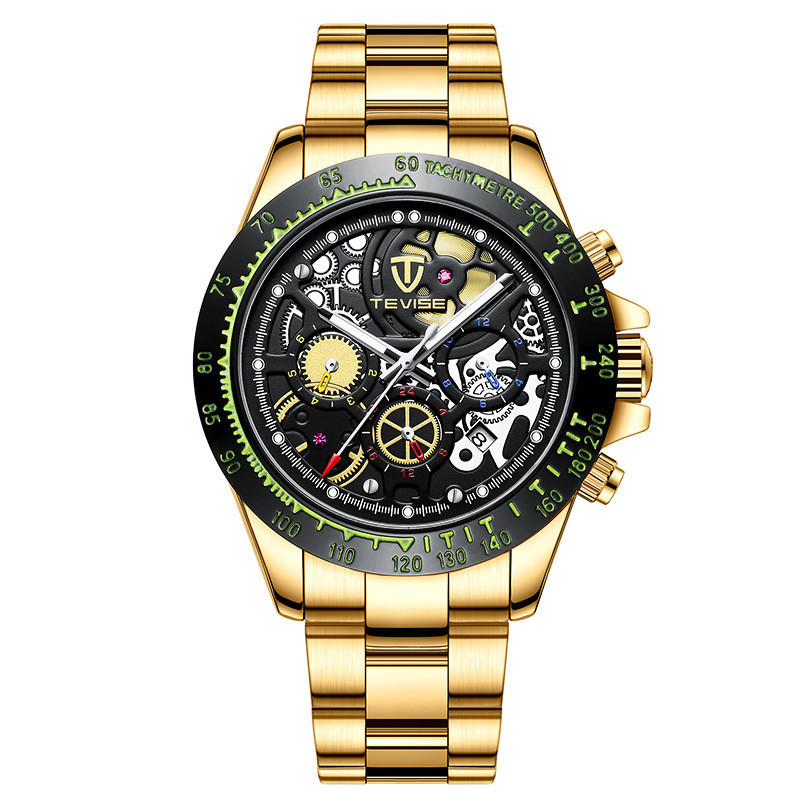You’ve seen it happen, or maybe you’ve lived it. You’re on vacation, take a refreshing dip in the pool, and glance at your wrist only to find a foggy crystal staring back at you. That sinking feeling is all too real. For many guys, a watch is more than a timepiece; it’s a daily companion for work, weekends, and adventures. That’s why finding a truly reliable timepiece you don’t have to baby is crucial.
First, let’s clear up a common misconception. In the watch world, the term “waterproof” is a bit of a misnader. No watch is entirely immune to water. The correct term is “water resistant,” and the level of that resistance is what really matters. Understanding this difference is the first step to choosing a watch that won’t let you down. This guide will cut through the confusion, explain what those water resistance ratings actually mean for your daily life, and showcase some of the best options available for every style and budget.
Water Resistance Decoded: Making Sense of Meters and ATM
When you’re shopping for a new timepiece, you’ll see numbers like “50m” or “10 ATM” on the dial. It’s easy to assume that “50m” means you can dive down to 50 meters, but that’s not quite the case. These ratings are based on static pressure tests in a lab, not the dynamic pressure of you moving your arm through water during a swim.
Here’s a straightforward breakdown of what those ratings mean for real-world use:
- 3 ATM (30 meters): Think of this as splash-proof. It can handle rain, accidental splashes, and washing your hands. Do not swim with it.
- 5 ATM (50 meters): This is good for showering, swimming in a pool for a casual dip, and water sports where you’re not submerging deeply. It’s still not recommended for snorkeling or diving.
- 10 ATM (100 meters): Now we’re talking. This is the sweet spot for most men. You can confidently go recreational swimming, snorkeling, and enjoy most water sports without a second thought.
- 20 ATM (200 meters) and above: This is the territory of serious dive watch models. These are built for professional aquatic activity, including scuba diving. They often feature a unidirectional bezel to track dive time.
A quick pro tip: Remember that water resistance isn’t permanent. Gaskets can degrade over time, so it’s a good idea to have your watch pressure tested every couple of years if you’re a frequent swimmer.
How We Selected the Top Picks
We didn’t just pick watches that look good. Our selection process was based on a few key pillars to ensure we’re recommending timepieces that deliver on their promises. We prioritized verified water resistance ratings from reputable brands, overall durability including the quality of the materials and crystal, and strong value for the price. Finally, we considered style versatility—because a great watch should look as good with jeans as it does with swim trunks.
Your Buying Guide: Picking the Perfect Match
Before you click “add to cart,” take a moment to consider your actual needs. Be honest about your lifestyle. Are you a lap swimmer or just someone who wants peace of mind in a sudden downpour? Match the watch’s rating to your real-world activities. Next, think about the movement. A quartz watch is incredibly accurate and low-maintenance, while an automatic (self-winding) watch offers traditional craftsmanship. Finally, consider the strap. A stainless steel bracelet or silicone/rubber strap is ideal for water use, while leather, though stylish, should be kept dry.
Keeping Your Watch in Top Shape
A great watch can last for decades with proper care. A simple habit can greatly extend its life: always rinse it with fresh, clean water after it’s been exposed to saltwater or chlorinated pool water. This prevents corrosion and buildup. Never, under any circumstances, push the buttons or pull out the crown while the watch is submerged. And as mentioned earlier, periodic servicing every two to three years will ensure the gaskets remain sealed and your timepiece stays protected.
Conclusion
Choosing the right waterproof watch ultimately comes down to your personal style, your planned activities, and your budget. Whether you opt for the rugged dependability of a G-Shock, the incredible value of a Casio Duro, or the iconic status of a Rolex, the most important thing is that you find a watch you love and can wear with complete confidence. Use this guide as your starting point, and you’re sure to find a durable companion that’s ready for whatever life throws your way—even if it’s a wave.


